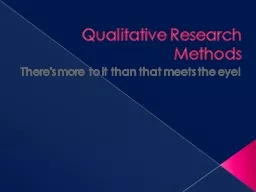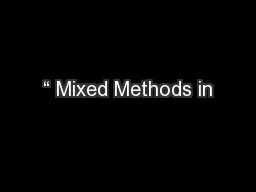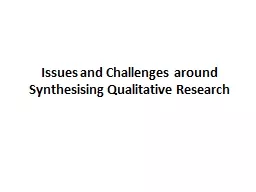PPT-Qualitative Research Methods
Author : envrrolex | Published Date : 2020-06-16
There s more to it than that meets the eye Definition Definition Qualitative research is used to gain insight into peoples attitudes behavior value systems concerns
Presentation Embed Code
Download Presentation
Download Presentation The PPT/PDF document "Qualitative Research Methods" is the property of its rightful owner. Permission is granted to download and print the materials on this website for personal, non-commercial use only, and to display it on your personal computer provided you do not modify the materials and that you retain all copyright notices contained in the materials. By downloading content from our website, you accept the terms of this agreement.
Qualitative Research Methods: Transcript
Download Rules Of Document
"Qualitative Research Methods"The content belongs to its owner. You may download and print it for personal use, without modification, and keep all copyright notices. By downloading, you agree to these terms.
Related Documents














